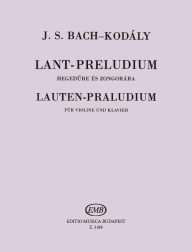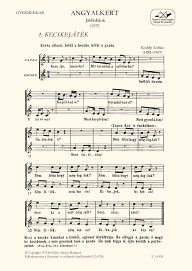The journey of musical works from author to performer
The task of the music publisher is to put manuscripts (be they paper or computerised) into a form that is legible, inspiring, and easy to use for performers; and to ensure the promotion, distribution, and legal use of the works.
With 75 years of experience behind us, we do this honourable work with consideration, commitment, and enthusiasm.
We thank the composers and music teachers who entrust their works to us.
Kodály, Zoltán
Zoltán Kodály (b Kecskemét, 16 December 1882; d Budapest, 6 March 1967) was one of the creators of a new Hungarian art music based on folk sources, and he laid the foundation of the development of a broad-based and musically literate culture.
His father, Frigyes worked for the Hungarian state railways as station master at Szob (1883–84), Galánta (1885–92) and Nagyszombat (1892–1910). Thus, Kodály spent his first 18 years in the Hungarian countryside. At home he became acquainted with various musical instruments and with some Classical masterpieces. He attended the Archiepiscopal Grammar School in Nagyszombat where he passed all his examinations with distinction, showing a particular proficiency in literature and languages. Concurrently he learnt to play the piano, violin, viola and cello with very little tuition. He also sang in the church choir, and he began to compose. At the Budapest University and at Eötvös College he received a broad education, and at the same time he began studies at the Academy of Music. Taking composition with Koessler, he received diplomas in composition (1904) and teaching (1905), and in April 1906 he was awarded the PhD for his thesis A magyar népdal strófa-szerkezete (“The stanzaic structure of Hungarian folksong”).
His own folk music collecting tours began in August 1905 and continued for many decades; in 1906 he received a modest scholarship for foreign study. He left for Berlin, moving from there some month later to Paris. The most memorable experience of his six months journey was the encounter with the music of Debussy. After his return he was appointed professor at the Academy of Music. In 1911 Kodály, Bartók and others formed the New Hungarian Music Society (UMZE) to ensure the careful performance of contemporary works, but within a few years the organization had ceased activities. Between November 1917 and April 1919, he worked as a music critic, publishing nearly 50 reviews in the literary magazine Nyugat and later in the literary daily paper Pesti Napló. After the fall of the Hungarian Republic of Councils he was relieved of his post as deputy director at the Academy of Music and could not resume teaching until two years later.
In 1921 his isolation abroad and at home was broken by the resounding success of his Psalmus Hungaricus and Universal Edition began to publish his scores. In 1926 Kodály had made a fresh start, and his career gained further momentum with the premiėres of the Singspiel Háry János. His frequent appearances abroad did not divert Kodály’s attention from work to be done in Hungary. He extended his educational activities, for this purpose he produced singing and reading exercises and composed choruses, he gave lectures, wrote articles, conducted concerts all over the country and waged a veritable battle against musical illiteracy and semieducation. As early as the beginning of the 1930s he was able, without any official support to start the Singing Youth movement on a national scale, and within ten years the time had come for a radical change in elementary-school music education.
Meanwhile Kodály’s work as a composer and scholar was developing. His comprehensive summary A magyar népzene (“Hungarian Folk Music”) was published in 1937, having been preceded by numerous preparation studies, and from 1934 he was engaged in the task of editing the collection of folk music, work which he had to continue alone after Bartók's emigration. The Academy of Sciences elected him to corresponding membership in 1943. During the war he helped save people from persecution until he and his wife had to seek refuge in the cellar of a Budapest convent.
With the establishment of peace, a series of institutions invited him to take part in their work: he was elected a deputy in the national assembly and chairman of the board of directors of the Academy of Music; he was made president of the Hungarian Art Council and of the Free Organization of Musicians, and he was elected to full membership and then honorary membership of the Academy of Sciences, of which he served as president from 1946 to 1949. Kodály received high government decorations (1947, 1952, 1962) and three Kossuth Prizes (1948, 1952, 1957). He was accorded honorary doctorates by the universities of Budapest (1957), Oxford (1960), East Berlin (1964) and Toronto (1966), and honorary membership of the Belgian Academy of Sciences (1957), the Moscow Conservatory (1963) and the American Academy of Arts and Sciences (1963). In addition, he was made president of the International Folk Music Council (1961) and honorary president of the International Society of Music Education (1964). The Herder Prize was awarded to him in 1965 in recognition of his work in furthering East-West cultural relations. Each year between 1960 and 1966 he travelled on long trips abroad, lecturing in English, French, German and Italian, and taking the chair at various conferences. He lived to see the realization of his ambitious plans for ethnomusicology and education.
 Deutsch
Deutsch English
English Español
Español Français
Français Magyar
Magyar Română
Română Slovenský
Slovenský Slovenščina
Slovenščina 中文
中文




















































































































































































































